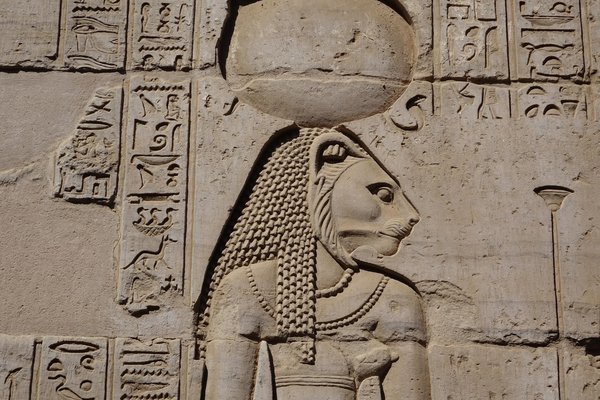Egypt
Pharaonic temples in Upper Egypt
Site Info
Official Information
- Full Name
- Pharaonic temples in Upper Egypt from the Ptolemaic and Roman periods (ID: 1824)
- Country
- Egypt
- Status
-
On tentative list 2003
Site history
History of Pharaonic temples in Upper Egypt
- 2003: Added to Tentative List
- Added to tentative list
- Type
- Cultural
- Criteria
Links
- UNESCO
- whc.unesco.org
All Links
UNESCO.org
- whc.unesco.org — whc.unesco.org
Community Information
- Community Category
- Archaeological site: Egyptian
Travel Information
Recent Connections
News
No news.
Recent Visitors
Visitors of Pharaonic temples in Upper Egypt
- Alexander Parsons
- AlexSchedel
- Ali Zingstra
- Ammon Watkins
- AmyAbroad
- Argo
- Badwater
- bergecn
- Boj
- Bropyk
- Carlos Sotelo
- Chantal den Haan
- christof
- Clyde
- Dennis Nicklaus
- DouglasR
- Els Slots
- Erik Jelinek
- Federico P.
- Francky D'Hoop
- Frédéric M
- GabLabCebu
- Geert Luiken
- George Gdanski
- GeorgeIng61
- Hammeel
- henryjiao18
- Jacob Otten
- Jan-Willem
- Jarek Pokrzywnicki
- Jay T
- João Aender
- jonathanfr
- Kevin McFarland
- Krzysztof B
- Little Lauren Travels
- MarcoB_0
- Mardigny
- MAURO PODDA PANI
- MaxHeAnouBen
- MoPython
- nan
- Patrik
- Paul Schofield
- Philipp Peterer
- Ralf Regele
- Reisedachs
- Rick Ohm
- Roman Bruehwiler
- Sandmann15
- Sergio Arjona
- Solivagant
- Squiffy
- Stanislaw Warwas
- Szucs Tamas
- Thomas Buechler
- Tim Allen
- Timothy C Easton
- tony0001
- Vanessa Buechler
- V&M
- voyager
- Wojciech Fedoruk
- YaroMir
- Zizmondka
Community Reviews
Show full reviews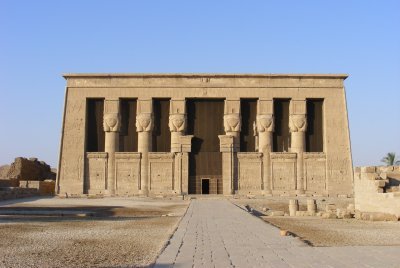
The four Pharaonic temples of Dendera, Esna, Edfu and Kom Ombo make up the tentative nomination and I have been fortunate enough to visit Dendera and Kom Ombo.I enjoyed The Temple of Hathor in Dendera (pictured) a lot, it is a very complete temple on account of its relatively young age of between 305 and 30 BEC, in fact it is one of the best preserved temple complexes in the whole of Egypt. The processional stairway leading to the roof of the temple is particularly impressive.The Temple of Kom Ombo, by contrast is more akin to the ruins found in Luxor and Philae. Although the building is newer in comparison with Dendera, 180-47 BEC, it has suffered damage caused by earthquakes, the river Nile and people taking the stones for their own building projects. It is a rare double temple, two temples, identical but dedicated to different Gods.What I found surprising at both Dendera and Kom Ombo, was that these hugely impressive temples were completely devoid of tourists except for me and my daughter.Both locations are at least an hour's drive from the major tourist hub of Luxor, Dendera to the north and Kom Ombo to the south just after half way between Luxor and Aswan which may account for the lack of visitors. The Nile cruises probably stop here but not on the days I was there.Egypt has such a wealth of ancient sites I guess it's easy to overlook some of them but I found them both well …
Keep reading 0 commentsWojciech Fedoruk
Pharaonic temples in Upper Egypt
Pharaonic temples in Upper Egypt (On tentative list)
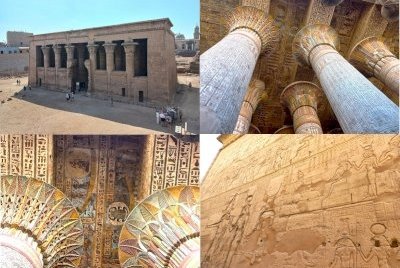
None of the previous reviewers has described the visit to Esna, which is part of this proposal, so in my post I will focus only on it. In short – don’t miss this one!
Esna is the first stop on the route of the temples of Upper Egypt from Luxor to Aswan. From Luxor leads to it a rather weak road, which takes about an hour. Esna and Edfu are connected by the same road, and the distance can be covered in an hour and a half. You should park on the main road, the last 300 meters walk around the souvenir stands.
The purpose of our visit in Esna was to visit a small but very well-preserved temple of the god Khnum. Its construction began in the fifteenth century BC, but was completed only in Roman times. The temple in Esna is undergoing intensive renovation and you can see the difference between renovated and non-renovated parts, especially on the vault. It is also surprising that architecturally it is similar to temples twenty centuries older. The Greek dynasty of the Ptolemaic, and later the Romans, managed to leave only a small mark on the architecture of this place.
I highly recommended this temple, after Dendera and Abydos, Esna has the best preserved wall and ceiling paintings of the entire Egyptian T-List. It is probably even better renovated than the aforementioned two.
Keep reading 0 comments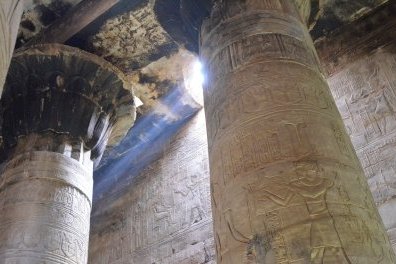
Egypt, being one of the greatest ancient civilizations in the world, is quite underrepresented on the list of WHS for just how much impressive remains are left today, and that reflects in Egypt's very long and rich T-list. To this day, only 3 sites, though extremely comprehensive and rich sites, have been inscribed for their significance in Ancient Egyptian history, even less than the Anasazi, Mayans, Australian Aborigines, Vikings, and other less influential and prominent cultures. In my eyes, the Pharaonic Temples are an easy 4th site among many deserving sites across Egypt. I visited Egypt in May 2018, and between Luxor and Aswan, I got to visit the temples of Edfu and Kom Ombo. I arrived in Edfu around mid-morning, which had a pleasant temperature, and Kom Ombo at around noon, which was almost unbearably scorching, but luckily, both times gave me an almost empty temple to explore, with maybe a couple of other small groups in each.
Edfu was one of my personal favorite sites of the whole trip. It follows a relatively ordinary succession of chambers of many Egyptian temples, but the difference here is the preservation. Walking through the grand entrance in the impressively tall and intricately decorated pylon, the outdoor courtyard doesn't even look like a ruin. It's completely surrounded by strong walls and uniform numbers of columns. The columns themselves aren't uniform, though, as each one has a different floral design for the capital. The statue of Horus guards the entrance to the …
Keep reading 0 comments
The Ptolemies ruled over Egypt from 304 to 30 BC. They were descendants of Macedonian Greeks, whose leader Alexander the Great had conquered the pharaonic lands and set up his capital in Alexandria in the far north. The Ptolemies (all their kings were named Ptolemy) did however contribute their own set of temples to the already existing landscape of sacred sites upstream along the Nile. Four of these temples are combined on the Tentative List under the name Pharaonic temples in Upper Egypt from the Ptolemaic and Roman periods. They are located in Dendera, Esna, Edfu and Kom Ombo. I visited the latter two as side trips from a dahabiya cruise along the Nile.
Edfu is a mid-size commercial town without any charm. Together with my 5 shipmates I crossed it quickly by horse carriage, the traditional form of taxi transport that also still can be found in Luxor. The temple’s parking lot even has a shaded section to park the horses.
The temple at Edfu is dedicated to the falcon-headed warrior god Horus. His image is the trademark of this temple, and the various granite sculptures of his face that stand guard at the site are especially picturesque. Due to having its roof intact, the temple itself feels more like a complete building than the ones I visited so far in Egypt. Inside there are dozens of separate rooms that were used for storage and as chapels. All of its walls are decorated with bas-reliefs. They have lost most …
Keep reading 0 comments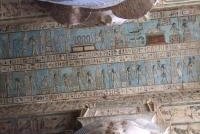
Of the four temples mentioned in the description of the site, I have visited three. The largest, the Temple of Hathor at Dendera has some spectacularly engraved walls, columns and ceilings, a significant number of which still retain their original colouring. While some engravings have been defaced by religious zealots in more recent times this temple deserves listing and the protection this will provide.
The Temple of Horus at Edfu was outstanding for its carved stone figure of a falcon at the entrance, as well as engravings of Horus, the falcon and Seth, a yellow hippopotamus battling one another.
The Temple of Sorek the crocodile at Kom Ombo also contained a fine collection of engravings, including a calender and a medical library depicting a set of surgical instruments of 5000 years ago.
Keep reading 0 comments
